It’s not just about mixing plants to deter pests – in fact, many combinations attract beneficial insects as well as birds to eat any invading pests and encourage pollination. Companion planting also helps you get the most from whatever growing space you have available and is equally useful in tiny urban spaces and sprawling rural properties.
I’ve put together a list of my favorite combinations for companion planting herbs and flowers with vegetables to help you get larger amounts of healthy crops from your organic garden, whether you have several acres, a square foot garden, or a vertical garden.
Companion planting brings species diversity not just to the flora, but the fauna, too. When you companion plant, you’re creating a diverse ecosystem – even if you’re creating a tiny one in a square foot bed. And diverse ecological systems are always far healthier and more well-balanced, requiring less human intervention and maintenance because they work as nature intended.
1. Companion Planting Marigolds to Repel Whiteflies & Trap Slugs
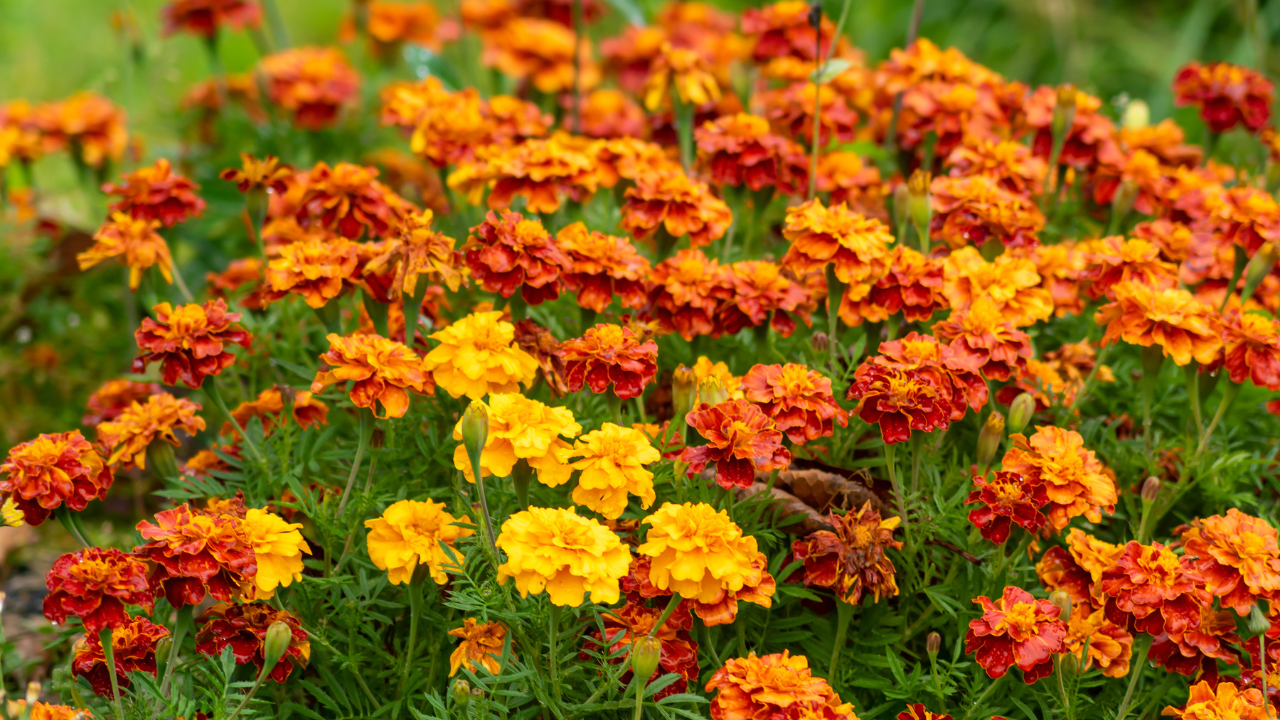
All varieties of marigolds, including pot marigolds, French and Mexican (Tagates) are among the best companion plants for vegetable gardens as well as ornamental gardens. Plant marigolds to repel whiteflies and ward off nematodes.
As companion plants, marigolds are an organic gardener’s best friend, because they help keep slugs off your food crops. We all know slugs are a total menace, munching their way through masses of young vegetable crops and causing devastation. But slugs have a weakness:
They adore marigolds. Instead of chomping on your veggies, they’ll head to the marigolds and feast there. So plant multiple patches all over the garden – just not too close to beans and brassicas. And, interestingly, marigold roots exude a chemical that actively repels tiny but potentially devastating soil-borne nematodes.
2. Companion Plant Chives With Carrots
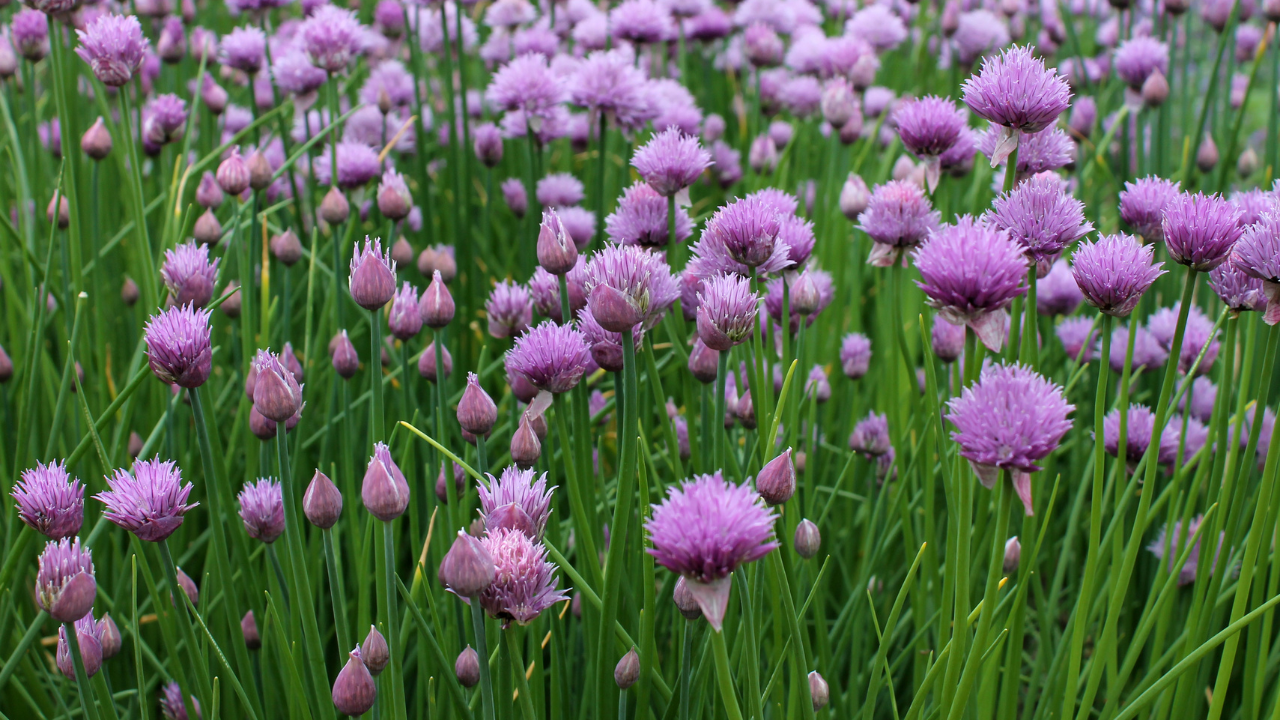
Chives, along with onions, are the ideal carrot companion planting choice. They repel the insanely annoying carrot fly. As an added bonus, chives also deter whitefly and aphids, they’re easy to grow, and they taste great. They’re also very easy to dry and store for seasoning recipes throughout the year.
3. Companion Planting Sweet Alyssum to Smother Weeds & Attract Bees
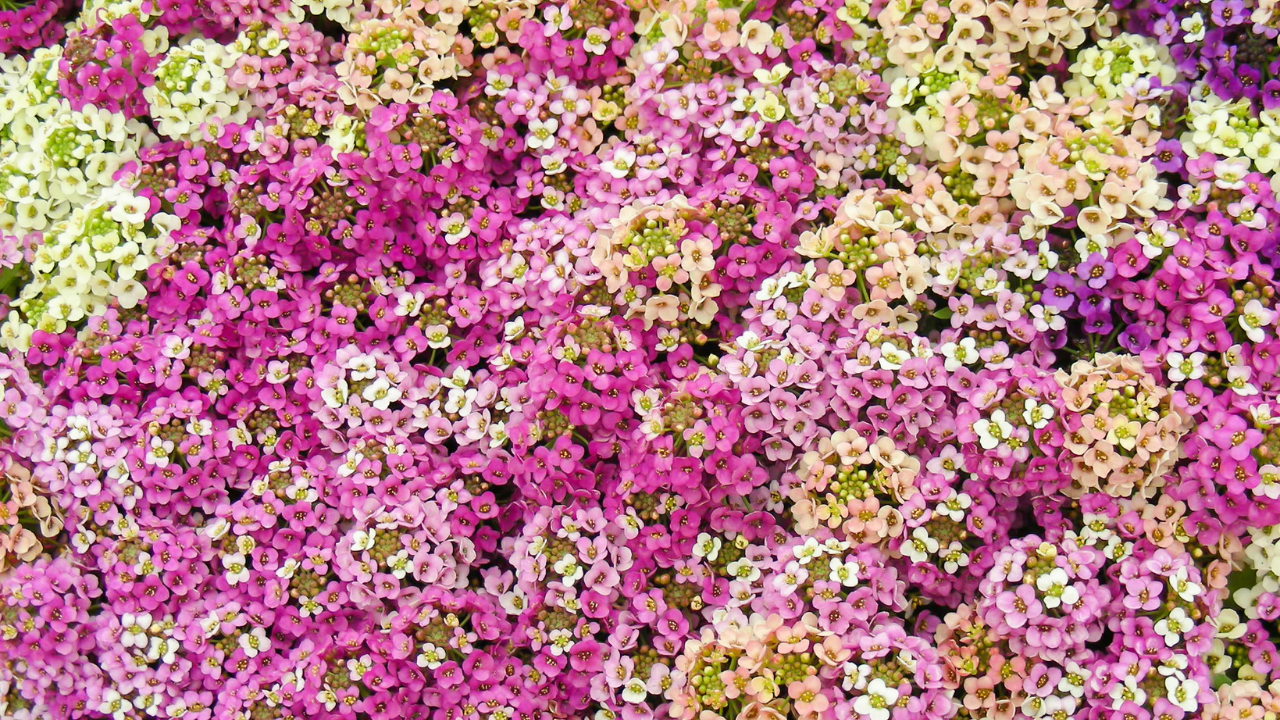
The primary function of companion planting sweet alyssum is natural, organic weed control. It grows quickly, creating thick, low-growing mats that help to prevent weeds, and you can use it as a green manure, too.
Plant sweet alyssum on bare earth or in between crop rows, or anywhere else you don’t want to see weeds. When the growing season finishes, just dig the mats back into the ground to help replenish the nutrients in the soil. When they bloom, the fragrant flowers attract bees to the garden to help with the pollination of your vegetable crops.
4. Companion Plant Nasturtiums With Squashes & More
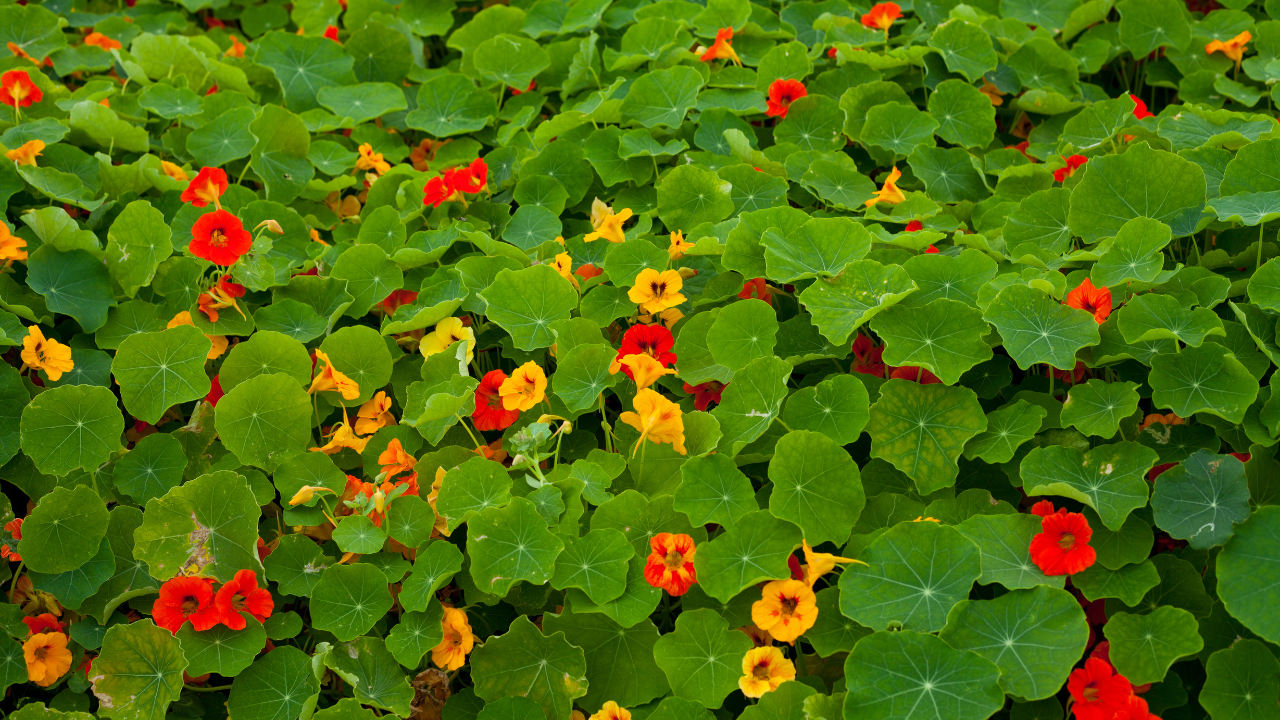
Nasturtium companion planting has multiple benefits. Firstly, they act as decoy companion plants for pests like aphids. This means that nasturtiums attract aphids to themselves and away from neighboring crops. Acting as both decoy and trap, the bright flowers of the nasturtium attract larger predatory insects that feast on tiny insect pests.
Nasturtium companion planting also repels a long list of other insects. Brilliant for planting near members of the squash family, nasturtiums repel squash bugs, pumpkin beetles, and vine borers. Their ability to deter common cabbage family pests like whitefly is another reason for their popularity among organic growers. And, the flowers have a strong, peppery flavor that makes a fabulous addition to salads.
5. Companion Planting Dill With Squashes & Cabbages
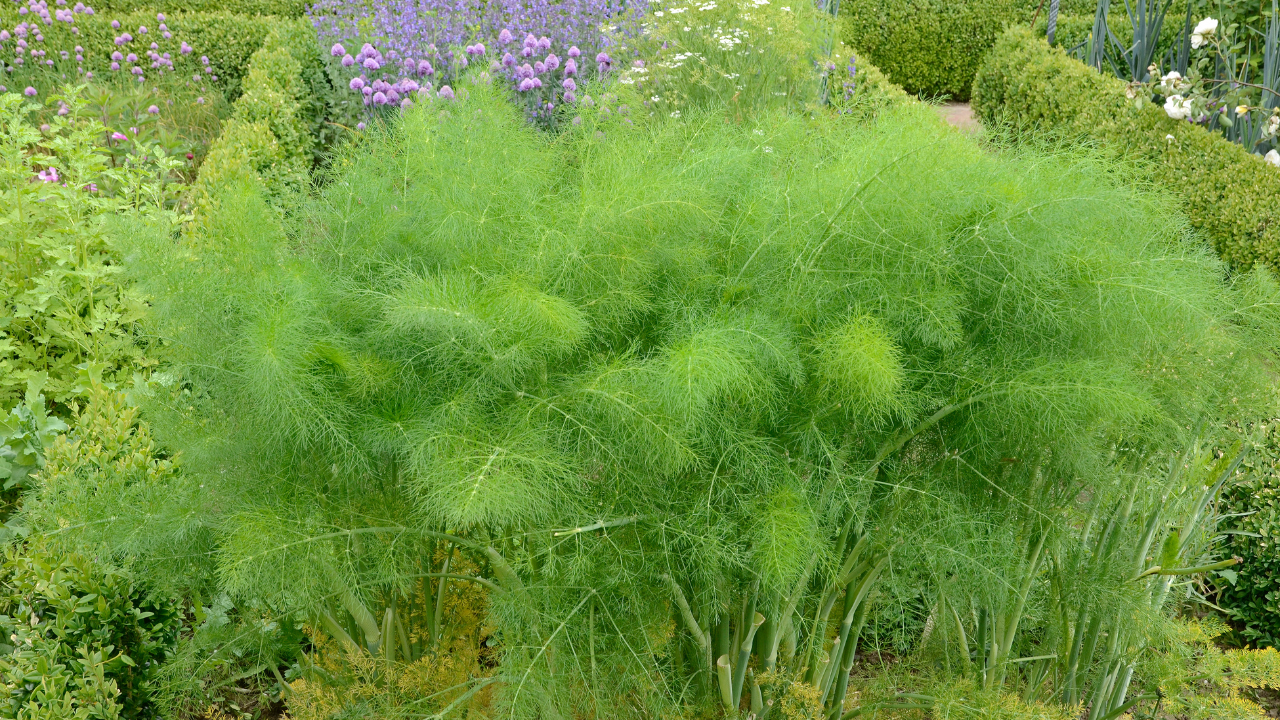
For many organic vegetable gardeners, dill is their staple companion plant, particularly in when used in close proximity to members of the cabbage family. Dill firstly improves the growth, health, and flavor of these crops.
When in bloom, it also attracts large, predatory wasps as well as ladybugs, lacewings, hoverflies that feast on the pests like aphids and squash beetles that commonly attack squash and cabbage crops.
Dill is a versatile companion plant and, for brassicas, it has another significant benefit: Its scent deters pests like cabbage worm, cabbage moths, and cabbage loopers.
6. Companion Planting Sage to Deter Pests and Enhance Tomato Flavor
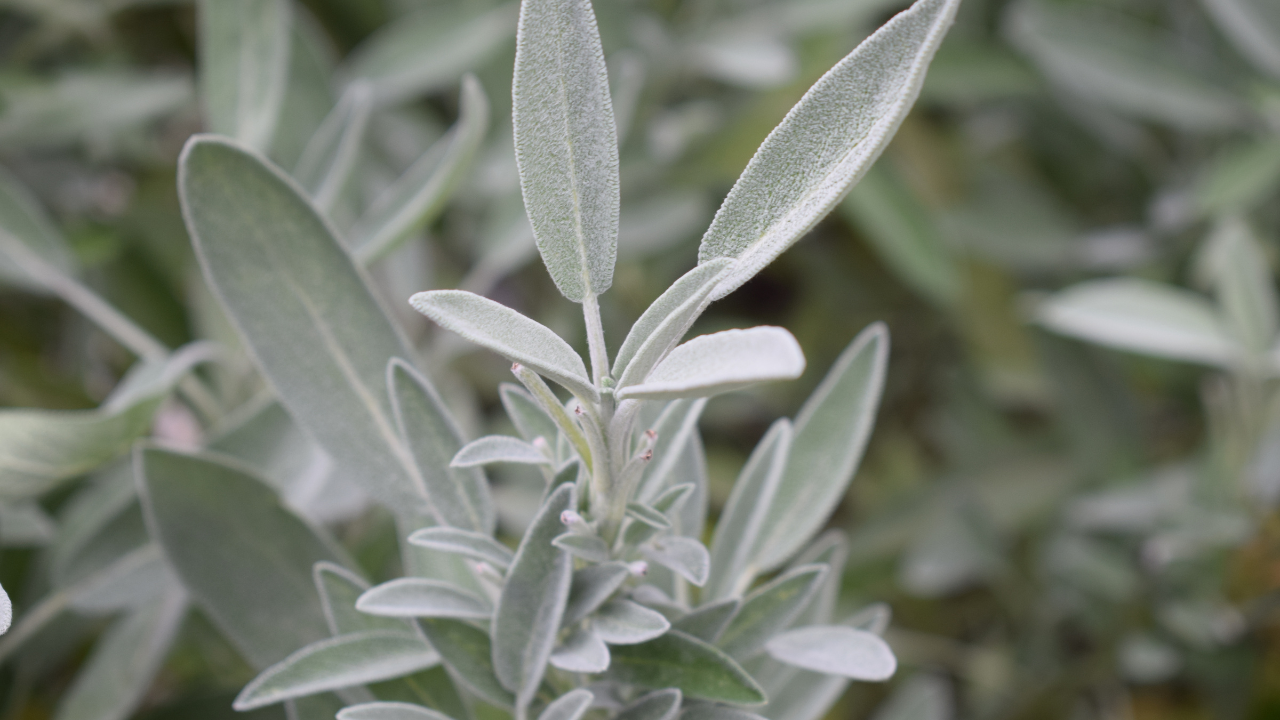
Sage has a strong scent and makes an outstanding companion to the cabbage family, carrots, and tomatoes. This herb wards off the dreaded cabbage moth, along with whitefly and carrot fly. Companion planting sage with tomatoes invigorates the tomato crop, deepens the flavor, and repels troublesome pests like hornworm.
Sage is definitely the organic gardener’s friend and should be interplanted throughout the growing area, with only a couple of restrictions.
7. Companion Planting Catnip to Repel Insects and Rodents
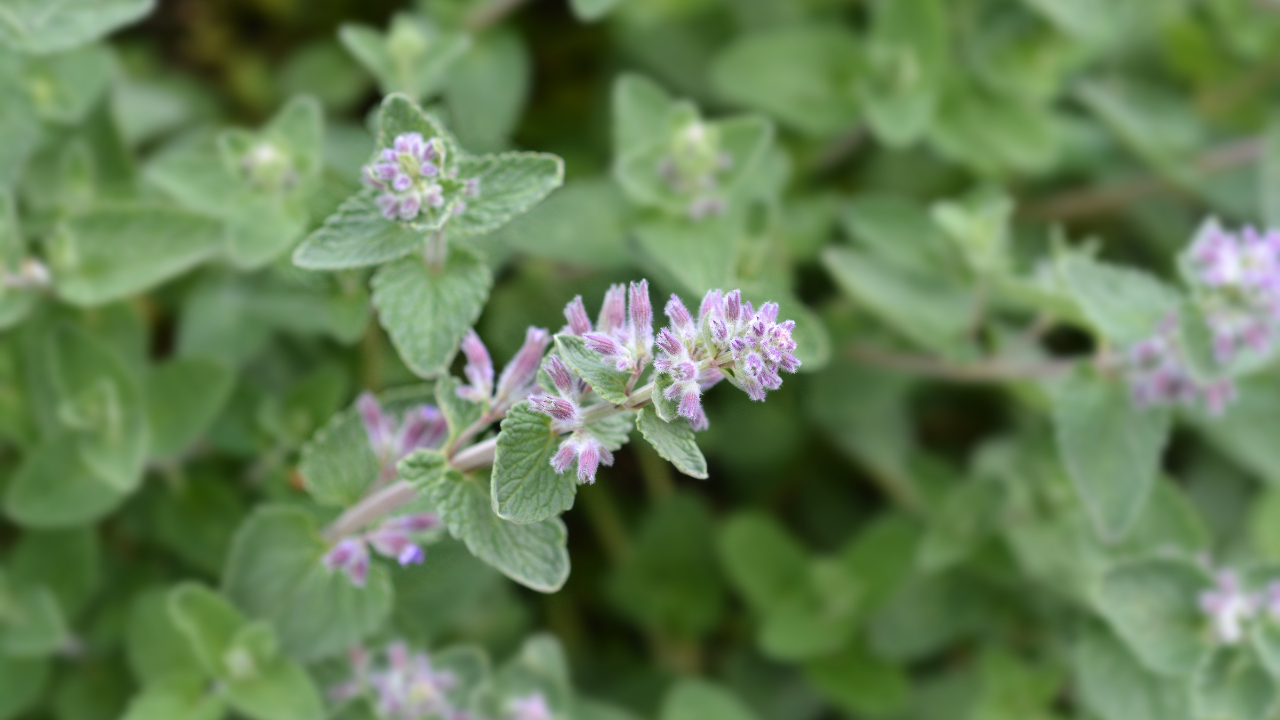
Yep, companion planting catnip is a genuine “thing” practiced by organic growers all over the globe. We all know that catnip is irresistible to cats, and growing catnip gives your cats a healthy, organic supply.
Yes, it does attract cats to your garden, but they’re so entranced by the catnip that they forget all about having a poop or digging up your crops. Plus, having cats around helps to keep rodent populations down. Planting catnip as a border around crops that are vulnerable to voles, mice, and other rodent pests does wonders, as these little critters loathe the scent of catnip.
One theory claims it’s because the mice associate the scent of catnip with their natural predators. However, I think it’s more likely that the pungent oils in catnip are as abhorrent to mice and rats as they are to the long list of insects catnip repels. Companion planting catnip deters a long list of insect pests, including ants, flea beetles, Japanese beetles, Colorado potato beetles, cabbage loopers, weevils, aphids, and squash beetles.
Therefore, you should plant it alongside collards, beets, pumpkins, all squash varieties, brassicas, and potatoes.
8. Companion Planting Yarrow to Attract Predators and Pollinators
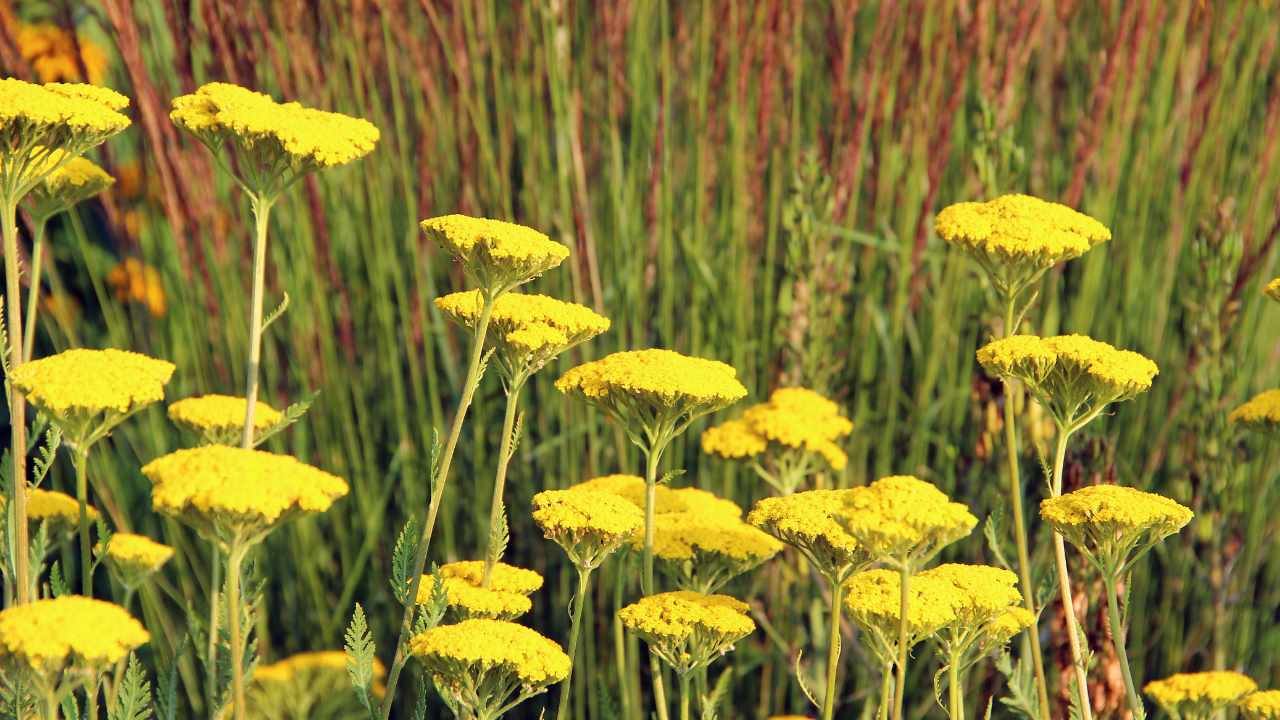
Yarrow has multiple benefits in the vegetable garden. It attracts bees to aid pollination and predatory insects that consume large volumes of pests like aphids. You can get red, white, or yellow varieties. Yellow and white are more common, but I adore the red ones – the colors are just so bold and enticing.
So I do plant this variety for its companion planting capabilities, but I also plant the original white yarrow to use in herbal remedies. It also acts as an organic fertilizer, returning large amounts of nutrients to the soil, and it root systems help to improve the drainage and structure of heavy soils. So, if you have a patch of compacted earth or some bare, heavy clay that not much will grow in, turn the area, dig in some compost, then use yarrow as green manure, leaving it undisturbed for a few months.
Yarrow has clusters of tiny blooms that draw predatory wasps, hoverflies, lacewings, ladybugs, and other insect-eating insect-eating critters that attack pests like tomato hornworms, aphids, and similar. It’s not just good for attracting insects – yarrow is directly beneficial to a number of other plants, too. It stimulates the growth of aromatic herbs and helps keep brassicas, squashes and lemons, beans, and spinach healthy and free from pests and diseases.
9. Companion Planting Chrysanthemums to Repel Insects

There are a huge number of chrysanthemum varieties, and quite a few of those prove very useful in the vegetable garden. C. coccineum, for example, repels root nematodes, as does C. cinerariaefolium. Both of these varieties, commonly known as painted ladies or painted daisies, contain high concentrations of pyrethrum.
This natural insecticide contains six distinct pyrethrins which make up a very effective form of natural pest control. While live chrysanthemums will repel a whole host of bugs, including Japanese beetles, without doing them much harm, the plants don’t discriminate. Not being sentient, they can’t distinguish between an insect pest and a bee going around pollinating, for example. Chrysanthemums are also useful as general garden plants because they deter troublesome bugs like silverfish, ticks, lice, and roaches.
Create a general-purpose organic insecticide by drying chrysanthemum flowers, then grinding them with a mortar and pestle. Simply sprinkle the powder all over the garden. You can also steep the powder in some hot water to create a pyrethrum tea. Once it cools, pour the liquid straight onto the insects or the infested area.
Pyrethrum, when it dust or tea form acts as a double-action insecticide, killing a variety of insects on contact and with ingestion. It’s particularly effective against small, soft-bodied beasties like aphids. It’s non-residual, too, so it doesn’t hang around and is non-toxic, so is safe for humans and pets alike.
10. Companion Planting Dahlias to Repel Soil Nematodes
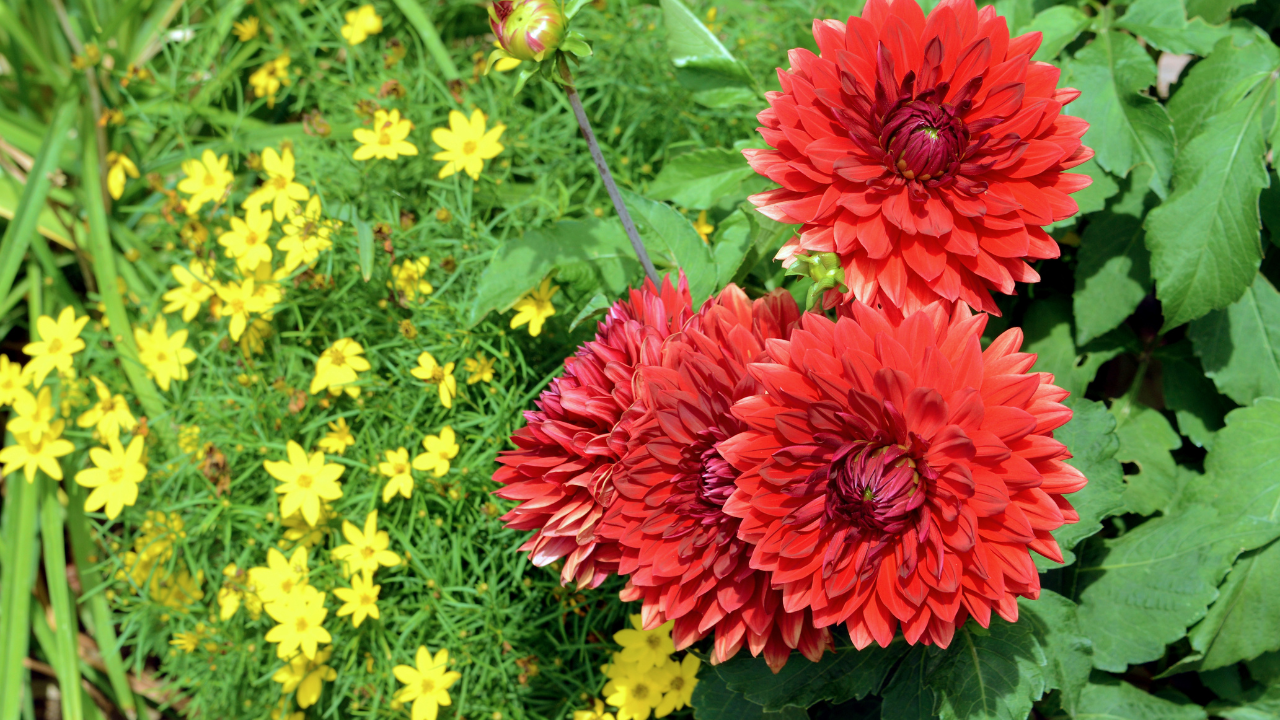
Another awesome nematode-repelling choice, dahlias also have large, bright blooms that attract pollinators. When companion planting dahlias, remember that earwigs cannot resist them. This isn’t necessarily a bad thing, as most earwig species devour pests like aphids. The drawback is that they’re omnivorous, and are partial to certain vegetable crops, too. So we advise keeping dahlias away from crops like corn that earwigs love.
11. Companion Planting Geraniums for General Pest Control
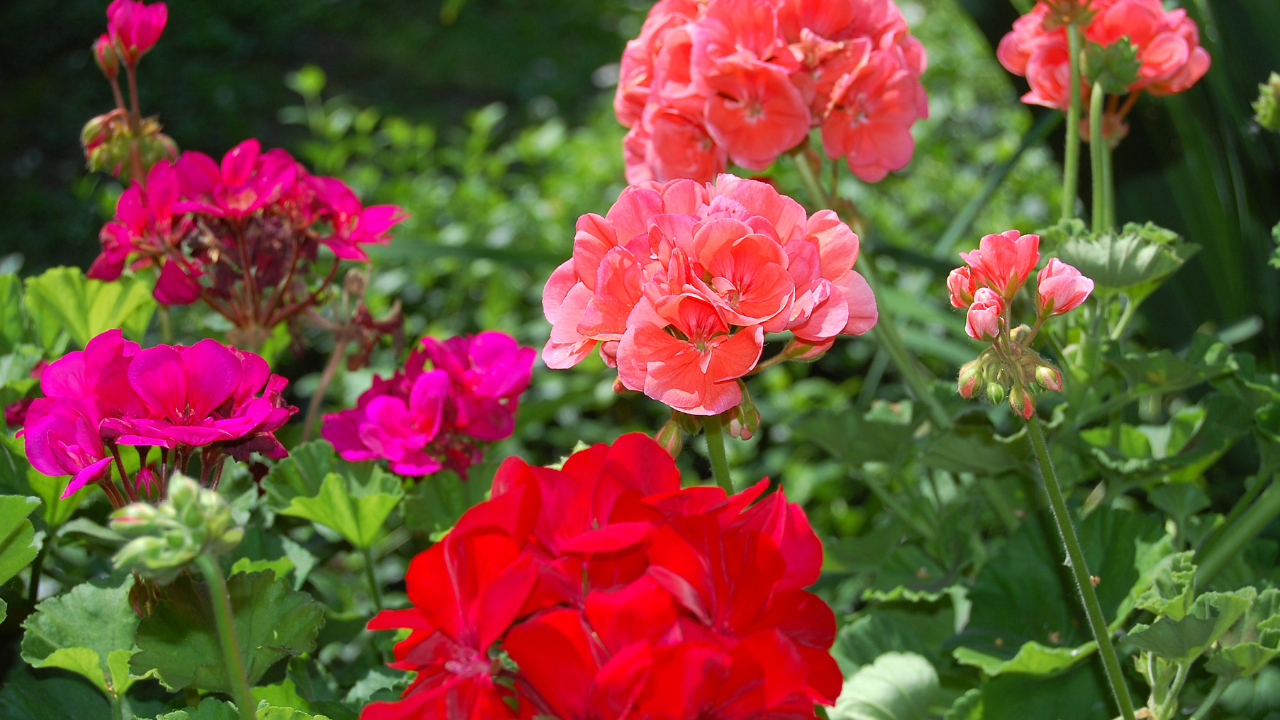
Geraniums make a beautiful addition to the vegetable garden, and they’re a great choice for attracting pollinators and predators. Companion planting geraniums with cabbage repels troublesome cabbage worms. White geraniums are particularly effective against Japanese beetles, earworms, and beet leafhoppers, so are a great choice for planting with corn, grapes, apples, asparagus, beans, and okra.
Scented geraniums, of the Pelargonium genus, are not true geraniums, but are still incredibly useful as companion plants in the vegetable garden. They repel spider mites and cotton aphids, so are very valuable additions to your vegetable patch, particularly if your area is prone to spider mite infestations.
12. Companion Planting Basil for Healthy, Pest-Free Tomatoes and More
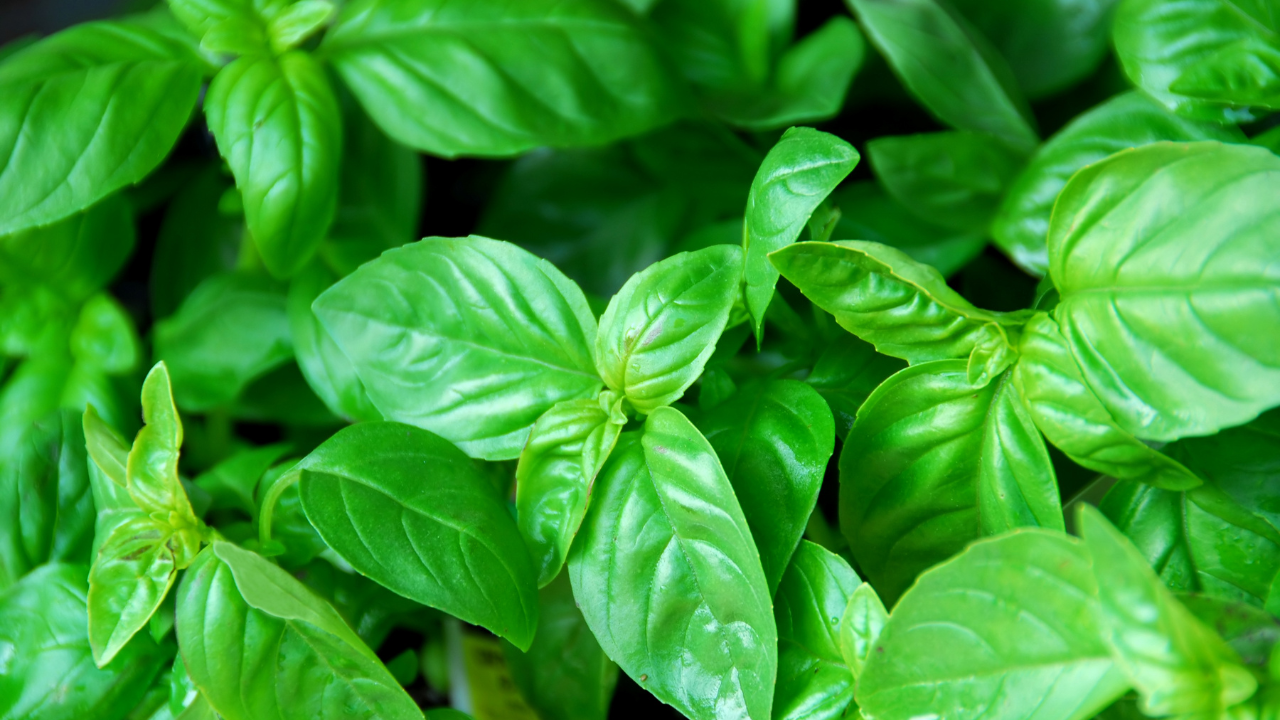
Companion planting basil with tomatoes, peppers, and asparagus, improves their flavor, health, and vigor. It’s exceptionally useful as a companion plant in the vegetable garden because it repels nematodes, aphids, asparagus beetles, whitefly, black fly, mosquitoes, and tomato hornworm.
Beets, potatoes, pole and bush beans also benefit from being planted near basil. These three herbs boost the intensity of the aromatics in basil, thereby improving its efficacy as a pest deterrent as well as boosting its flavor. Basil is particularly good for peppers because they like humidity, and basil provides lots of leafy ground cover that traps heat and moisture. And because it’s so effective against tomato hornworm, basil is the perfect companion plant for tomatoes. Additionally, basil improves the health of tomato plants and increases crop yield.
Becky is a wildlife enthusiast and pet and livestock care expert with a diploma in canine nutrition. With over a decade of experience in animal welfare, Becky lends her expertise to Simple Family Preparedness through insightful info about pets, livestock, bee keeping, and the practicalities of homesteading.

